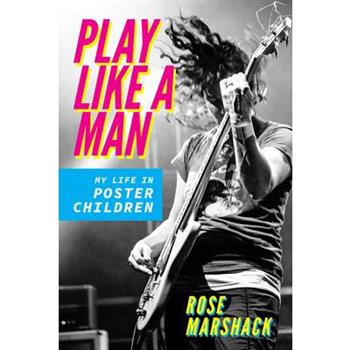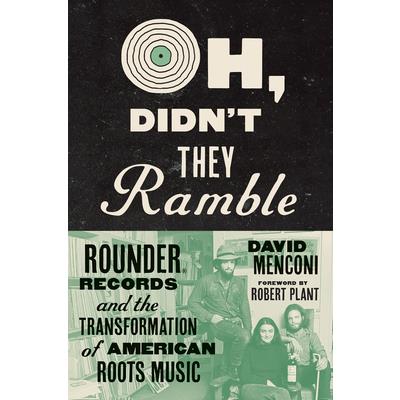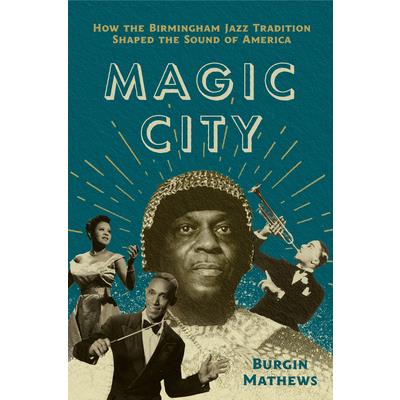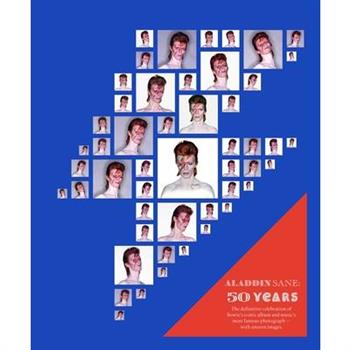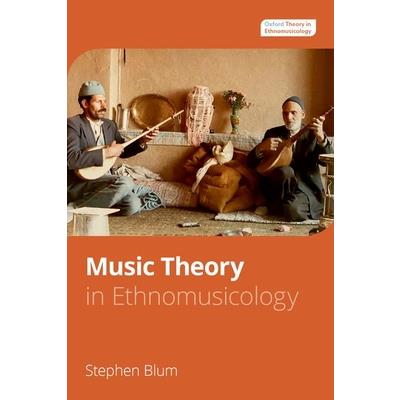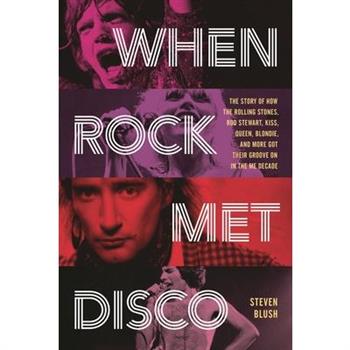Learning Jazz
Learning Jazz: Jazz Education, History, and Public Pedagogy addresses a debate that has consumed practitioners and advocates since the music's early days. Studies on jazz learning typically focus on one of two methods: institutional education or the kinds of informal mentoring relationships long associated with the tradition. Ken Prouty argues that this distinction works against a common identity for audiences and communities. Rather, what happens within the institution impacts--and is impacted by--events and practices outside institutional contexts. While formal institutions are well-defined in educational and civic contexts, informal institutions have profoundly influenced the development of jazz and its discourses. Drawing on historical case studies, Prouty details significant moments in jazz history. He examines the ways that early method books capitalized on a new commercial market, commandeering public expertise about the music. Chapters also discuss critic Paul Eduard Miller and his attempts to develop a jazz canon, as well as the disconnect between the spotlighted "great men" and the everyday realities of artists. Tackling race in jazz education, Prouty explores the intersections between identity and assessment; bandleaders Stan Kenton and Maynard Ferguson; public school segregation; Jazz at Lincoln Center; and more. He further examines jazz's "public pedagogy," and the sometimes-difficult relationships between "jazz people" and the general public. Ultimately, Learning Jazz posits that there is room for both institutional and noninstitutional forces in the educational realm of jazz.
Learning Jazz
Learning Jazz: Jazz Education, History, and Public Pedagogy addresses a debate that has consumed practitioners and advocates since the music's early days. Studies on jazz learning typically focus on one of two methods: institutional education or the kinds of informal mentoring relationships long associated with the tradition. Ken Prouty argues that this distinction works against a common identity for audiences and communities. Rather, what happens within the institution impacts--and is impacted by--events and practices outside institutional contexts. While formal institutions are well-defined in educational and civic contexts, informal institutions have profoundly influenced the development of jazz and its discourses. Drawing on historical case studies, Prouty details significant moments in jazz history. He examines the ways that early method books capitalized on a new commercial market, commandeering public expertise about the music. Chapters also discuss critic Paul Eduard Miller and his attempts to develop a jazz canon, as well as the disconnect between the spotlighted "great men" and the everyday realities of artists. Tackling race in jazz education, Prouty explores the intersections between identity and assessment; bandleaders Stan Kenton and Maynard Ferguson; public school segregation; Jazz at Lincoln Center; and more. He further examines jazz's "public pedagogy," and the sometimes-difficult relationships between "jazz people" and the general public. Ultimately, Learning Jazz posits that there is room for both institutional and noninstitutional forces in the educational realm of jazz.
What a Difference a Day Makes
In What a Difference a Day Makes: Women Who Conquered 1950s Music, Steve Bergsman highlights the Black female artists of the 1950s, a time that predated the chart-topping girl groups of the early 1960s. Many of the singers of this era became wildly famous and respected, and even made it into the Rock 'n' Roll Hall of Fame. However, there were many others, such as Margie Day, Helen Humes, Nellie Lutcher, Jewel King, and Savannah Churchill, who made one or two great records in the 1950s and then disappeared from the scene. The era featured former jazz and blues singers, who first came to prominence in the 1940s, and others who pioneered early forms of rock 'n' roll. In a companion volume, Bergsman has written the history of white women singers of the same era. Although song styles were parallel, the careers of Black and white female singers of the period ran in very different directions as the decade progressed. The songs of African American vocalists like Dinah Washington and Etta James were segregated to the R&B charts or covered by pop singers in the early and mid-1950s but burst into prominence in the last part of the decade and well into the 1960s. White singers, on the other hand, excelled in the early 1950s but saw their careers decline with the advent of rock music. In this volume, Bergsman takes an encyclopedic look at both the renowned and the sadly faded stars of the 1950s, placing them and their music back in the spotlight.
All I Want Is Loving You
In All I Want Is Loving You: Popular Female Singers of the 1950s, author Steve Bergsman focuses on the white, female artists of the 1950s, a time that predated the chart-topping girl groups of the early 1960s. These popular performers, many of whom graduated out of the big bands of the 1940s, impacted popular music in a huge way. As the last bastion of traditional pop and the last sirens of swing, they undeniably shined in the spotlight. Yet these singers' fame dimmed relatively quickly with the advent of rock 'n' roll. A fortunate few, like Doris Day, Patti Page, Peggy Lee, and Debbie Reynolds, experienced some of their biggest hits in the late 1950s, and Eydie Gorm矇 broke out in the 1960s. The luckiest, including Dinah Shore and Rosemary Clooney, ventured to television with varying degrees of success. Others would become major attractions at nightclubs in Las Vegas or, like Teresa Brewer, shift into the jazz world. Though the moment did not last, these performers were best-selling singers, darlings of the disk jockeys, and the frenetic heartbeat of fan clubs during their heyday. In a companion volume, Bergsman has written the history of African American women singers of the same era. These Black musicians transitioned more easily as a new form of music, rock 'n' roll, skyrocketed in popularity. In both books, Bergsman reintroduces readers to these talented singers, offering a thorough look at their work and turning up the volume on their legacy.
Deanna Durbin in Fashion
A concise illustrated book featuring a small selection of black and white fashion photographs of the Classical singer and actress Deanna Durbin modelling the elegant designs of the 1930s and 1940s. The ideal book for true connoisseurs who combine an interest in Classical music in film, in particular in film operellas and operettas, with an interest in fashion design, and who wish to admire their favourite soprano dressed in the most stylish of fashions.
Song, Landscape, and Identity in Medieval Northern France
Song, Landscape, and Identity in Medieval Northern France offers a new perspective on how medieval song expressed relationships between people and their environments. Informed by environmental history and harnessing musicological and ecocritical approaches, author Jennifer Saltzstein draws connections between the nature imagery that pervades songs written by the trouv癡res of northern France to the physical terrain and climate of the lands on which their authors lived. In doing so, she analyzes the different ways in which composers' lived environments related to their songs and categorizes their use of nature imagery as realistic, aspirational, or nostalgic. Demonstrating a cycle of mutual impact between nature and culture, Saltzstein argues that trouv癡re songs influenced the ways particular groups of medieval people defined their identities, encouraging them to view themselves as belonging to specific landscapes. The book offers close readings of love songs, pastourelles, motets, and rondets from the likes of Gace Brul矇, Adam de la Halle, Guillaume de Machaut, and many others. Saltzstein shows how their music-text relationships illuminate the ways in which song helped to foster identities tied to specific landscapes among the knightly classes, the clergy, aristocratic women, and peasants. By connecting social types to topographies, trouv癡re songs and the manuscripts in which they were preserved presented models of identity for later generations of songwriters, performers, listeners, patrons, and readers to emulate, thereby projecting into the future specific ways of being on the land. Written in the long thirteenth century during the last major era of climate change, trouv癡re songs, as Saltzstein demonstrates, shape our understanding of how identity formation has rested on relationships between nature, culture, and change.
Taylor Swift
With her deeply personal songwriting, countless hit songs, and genre-bending yet unmistakable sound, Taylor Swift has cemented her status as one of pop music's most iconic and culture-defining voices. On the heels of her latest album, "Midnights," this visually stunning book pays tribute to Swift's different eras as a musician, her sonic and aesthetic influences, personal inspirations, and the incredible community she has fostered among her international fanbase--all alongside dozens of full-color photos.
From an Arabic Language Hymnal
The hymns are of various themes and give the glory to God. They were translated with similar meters to that found in the Arabic language. The hymns are my translations of hymns from an Arabic language hymnal that was used by evangelical churches in Lebanon.
The Stephen Sondheim Encyclopedia
Praise from Jesse Green, New York Times Chief Theater Critic, Arts, in the 2023 Holiday Gift Guide: "From A (the director George Abbott) to Y ('You Could Drive a Person Crazy'), The Stephen Sondheim Encyclopedia, by Rick Pender, offers an astonishingly comprehensive look, in more than 130 entries, at the late master's colleagues, songs, shows and methods."The Stephen Sondheim Encyclopedia is a wonderfully detailed and comprehensive reference devoted to musical theater's most prolific and admired composer and lyricist. Entries cover Sondheim's numerous collaborators, from composers and directors to designers and orchestras; key songs, such as his Academy Award winner "Sooner or Later" (Dick Tracy); and major works, including Assassins, Company, Follies, Sweeney Todd, and West Side Story. The encyclopedia also profiles the actors who originated roles and sang Sondheim's songs for the first time, including Ethel Merman, Angela Lansbury, Mandy Patinkin, and Bernadette Peters.Featuring a detailed biographical entry for Sondheim, a chronology of his career, a listing of his many awards, and discussions of his opinions on movies, opera, and more, this wide-ranging resource will attract musical theater enthusiasts again and again.
Rock Music, Authority and Western Culture, 1964-1980
The history of rock and roll music can be seen in a long arc of Western civilization's struggle for both greater individual expression and societal stability. In the 1960s, the West's relationship with authority ruptured, in part due to the rock revolution. The lessons and implications of this era have yet to be fully grasped. This book examines the key artists, music, and events of the classic rock era--defined here as 1964 to 1980--through a virtual psychoanalysis of the West. Over these years, important truths unfold in the stories of British Invaders, hippies, proto-punks, and more, as well as topics to include drugs, primal scream therapy, the occult, spirituality, and disco and its detractors, to name just a few. Through a narrative that is equal parts entertaining, scholarly, and even spiritual, readers will gain a greater appreciation for rock music, better understand the confusing world we live in today, and see how greater individuality and social stability may be better reconciled moving forward.
Gospel Musings
""Let the word of Christ dwell in you richly"" (Col 3:16). Regain the art of meditation, aided by simple versification of Scripture and hymnody that is firmly based on the word of God. Aptly suited to enrich private or family devotions, Gospel Musings: An Anthology of Scriptural Poetry & Hymnody brings new life to longstanding tradition. Highlighting the doctrines of grace, these poems promote Reformed theology in systematic and liturgical fashion. As meditations put to music, Gospel Musings engages in ""teaching and admonishing one another,"" all the while bringing praise to our Lord. Children and adults alike can use these songs to engage in thoughtful worship, ""singing with grace in your hearts to the Lord.""
Stampfel on Weber and the Complete Boston Broadsides 1964-1967
Bach Cello Suites
A unique Companion to J S Bach's iconic Cello Suites from internationally-renowned cellist Steven Isserlis. Bach's 6 Suites for solo cello are among the most cherished of all the works in the classical music literature. Shrouded in mystery - they were largely unknown for some two hundred years after their composition - they have acquired a magical aura which continues to attract and fascinate audiences the world over. To cellists they represent a musical bible, to listeners, scarcely less. Through what are on the surface simple Dance Suites, Bach takes us on a spiritual journey like no other, leading us from joy to tragedy, concluding in jubilation, even triumph. Award-winning international cellist Steven Isserlis, whose recent recording of the Suites met with the highest critical acclaim, goes deep into that emotional journey, bringing to bear all his many years' experience of performing the Suites. His book is intended as a rewarding companion for all music lovers, ranging from the casual listener to the performing musician. By offering his own very personal observations of the music, Isserlis's aim is to take the reader further into the world of the Suites in order to enhance the experience of hearing some of the greatest works ever composed.
Don’t Call It Hair Metal
A love letter to the hard-rocking, but often snubbed, music of the era of excess: the 1980s There may be no more joyous iteration in all of music than 1980s hard rock. It was an era where the musical and cultural ideals of rebellion and freedom of the great rock 'n' roll of the '50s, '60s, and '70s were taken to dizzying heights of neon excess. Attention to songcraft, showmanship, and musical virtuosity (especially in the realm of the electric guitar) were at an all-time high, and radio and MTV were delivering the goods en masse to the corn-fed children of America and beyond. Time hasn't always been kind to artists of that gold and platinum era, but Don't Call It Hair Metal analyzes the sonic evolution, musical diversity, and artistic intention of '80s commercial hard rock through interviews with members of such hard rock luminaries as Twisted Sister, Def Leppard, Poison, Whitesnake, Ratt, Skid Row, Quiet Riot, Guns N' Roses, Dokken, Mr. Big, and others.
Teller of Tales
Here is a richly textured musical adventure about the charismatic author of Treasure Island. Young Robert Louis Stevenson defies chronic ill health and Victorian family traditions by going places and taking risks. His high spirits and sparkling talent dazzle London's literati until a turbulent romance sends him on a reckless odyssey to California. A stranger in colorful old Monterey he finds that winning at love becomes a life and death struggle to salvage his writing career and save himself. Launched with simultaneous premieres in Scotland and California Teller of Tales has a powerful script witty lyrics and a memorable musical score ranging from reel to ragtime.
Cougar
Cougar The Musical unleashes three divine but disillusioned women who develop a taste for hot young men. They let their inner cougar roar and purr finding self-love and empowerment in the process. The sexy ferocious cast of three fabulous-over-forty women and one multi-talented boy toy sing and dance their way through a satiating range of original songs from grinding blues to doo-wop to pop to "Julio " a romantic ballad sung to a vibrator. Hilarious soulful and heartwarming Co
Pageant
Judges selected from the audience actually vote and determine the winner who therefore may be different at each performance. The show takes its shots not by mocking the pageant from the outside but by being one. The six contestants compete for the title of Miss Glamouresse (Glamouresse being a cosmetics company). Miss Deep South Miss West Coast Miss Great Plains Miss Bible Belt Miss Industrial Northeast. and Miss Texas and compete in evening gowns talent swim-wear and spokemodeling plus the finalists answer actual calls from the Glamouresse Beauty Crisis Hotline.
Taking a Stand
As Timothy McGee says in his introduction, 'It is not an exaggeration to say that John Beckwith has been the single most important influence on Canadian music over the past forty years.' Beckwith's career as a composer, performer, teacher, administrator, author, editor, and promoter of Canadian music is unparalleled. It is fitting, then, that this group of papers, organized as a tribute to him, reflects not only his contribution, but also the current major directions of Canadian music.The contributions fall under the headings of composers and compositions, music education, comparative studies of music in Canada and the United States, and general views of music in Canada. The composers discussed include Bruce Cockburn, Istvan Anhalt, John Hawkins, and of course, John Beckwith. One essay looks at the way in which music was taught in nineteenth-century Toronto; another deal with music education in Canada today. The comparative studies include a consideration of sacred music in the early years and a look at the different ways in which American and Canadian composers treat native music. One essay probes what is typically Canadian about our study of own music. Another examines the role played the private patrons in supporting our cultural institutions.The essays reflect the variety of musical culture in our country. The music of Canada - past and present; popular, folk, and classical; its creator, collectors, and educators - is presented, discussed, and analysed by prominent scholars. Collectively the essays summarize the current state of research on Canadian music; individually they provide standards, patterns, approaches, and directions for future research.
Siouxsie and the Banshees - The Early Years
Monday 20th September 1976 saw one of the most unexpected moments in music history when what was to become one of the most iconic, important and mimicked bands of the 1970s, 1980s and 1990s took to the stage at The 100 Club in Oxford Street, London. A last-minute addition to the '100 Club Punk Special' that included The Clash, Sex Pistols, Buzzcocks and The Damned, an unknown Siouxsie and The Banshees, comprising Sid Vicious, Steve Severin, Marco Pirroni and Siouxsie Sioux, unleashed twenty minutes of 'performance art' improvisation, featuring fragments of 'Deutschland, Deutschland, Uber Alles', 'Twist And Shout' and 'Satisfaction'. 'The Lord's Prayer', which was to become a staple of Siouxsie and The Banshees' early live repertoire, was a white-noise assault on the senses and a barometer of the alienation many teenagers felt from the bloated nature of mid-1970s 'arena rock'. Several line-up changes later, in 1978, Siouxise and The Banshees were propelled into the pop stratosphere. Signed to a major record label, the band released 'Hong Kong Garden' and wrote one of the most influential post-punk albums of all time, The Scream, a savage critique of curtain-twitching suburbia, the cheap titillation of the tabloids, and the dangers of believing and following any one doctrine. 1979's Join Hands, influenced by the political landscape in Britain and further afield, and the catastrophic loss of life in World War One, was a milestone of the band's increasing maturity, from the adrenaline-fuelled stomp of 'Icon' to the phased guitar, saxophone and bells of 'Playground Twist'. After a tour fraught with fractiousness, a new line up with Slits' drummer Budgie and Magazine guitarist John McGeoch, together with Siouxsie Sioux and Steve Severin, released the band's most experimental album, Kaleidoscope, which was a heady mix of psychedelia and sonorous adventures including the singles 'Happy House' and 'Christine'. Siouxsie and The Banshees The Early Years explores the adventures, trials and tribulations of a band defying categorisation. Their uncompromising brilliance is exemplified by three unique albums, which are chronicled in the pages of this authoritative survey.
Play Like a Man
As a member of Poster Children, Rose Marshack took part in entwined revolutions. Marshack and other women seized a much-elevated profile in music during the indie rock breakthrough while the advent of new digital technologies transformed the recording and marketing of music. Touring in a van, meeting your idols, juggling a programming job with music, keeping control and credibility, the perils of an independent record label (and the greater perils of a major)--Marshack chronicles the band's day-to-day life and punctuates her account with excerpts from her tour reports and hard-learned lessons on how to rock, program, and teach while female. She also details the ways Poster Children applied punk's DIY ethos to digital tech as a way to connect with fans via then-new media like pkids listservs, internet radio, and enhanced CDs. An inside look at a scene and a career, Play Like a Man is the evocative and humorous tale of one woman's life in the trenches and online.
Kinetic Cultures
Belle 矇poque Paris adored dance. Whether at the music hall or in more refined theaters, audiences flocked to see the spectacles offered to them by the likes of Isadora Duncan, Diaghilev's flashy company, and an embarrassment of Salom矇s. After languishing in the shadow of opera for much of the nineteenth century, ballet found itself part of this lively kinetic constellation. In Kinetic Cultures, Rachana Vajjhala argues that far from being mere delectation, ballet was implicated in the larger republican project of national rehabilitation through a rehabilitation of its citizens. By tracing the various gestural complexes of the period--bodybuilding routines, appropriate physical comportment for women, choreographic vocabularies, and more--Vajjhala presents a new way of understanding histories of dance and music, one that she locates in gesture and movement.
Taylor Swift
This illustrated biography celebrates Taylor Swift's many hits and achievements Taylor Swift's discography spans multiple genres, and her narrative songwriting, which is often inspired by her personal life, has received widespread media coverage and critical praise. She has scored eight Billboard Hot 100 number-one songs, and won 11 Grammy Awards (including three Album of the Year wins), an Emmy Award, 34 American Music Awards. She featured on Rolling Stone's 100 Greatest Songwriters of All Time (2015) and Billboard's Greatest of All Time Artists list (2019). Having sold over 200 million records around the world she is one of the best selling music artists of all time. Named the Woman of the 2010s Decade by Billboard and the Artist of the 2010s Decade by the American Music Awards, Swift has been recognized for her influential career as well as advocacy of artists' rights and women's empowerment in the music industry. This is her story.
Ludwig Van Beethoven - Sheet Music
Sheet Music by Composer Ludwig Van Beethoven.Beethoven remains one of the most admired composers in the history of Western music; his works rank amongst the most performed of the classical music repertoire and span the transition from the Classical period to the Romantic era in classical music.Ludwig van Beethoven wrote 32 mature piano sonatas between 1795 and 1822. (He also wrote 3 juvenile sonatas at the age of 13 and one unfinished sonata, WoO. 51.)Although originally not intended to be a meaningful whole, as a set they comprise one of the most important collections of works in the history of music.Hans von B羹low called them "The New Testament" of piano literature (Johann Sebastian Bach's The Well-Tempered Clavier being "The Old Testament").Beethoven's piano sonatas came to be seen as the first cycle of major piano pieces suited to both private and public performance.They form "a bridge between the worlds of the salon and the concert hall".The first person to play them all in a single concert cycle was Hans von B羹low; the first complete recording is Artur Schnabel's for the label His Master's Voice.In this Volume: Piano Sonata No.27 in E minor, op.90Piano Sonata No.28 in A major, op.101Piano Sonata No.29 in B flat major, op.106 "Hammerklavier"Piano Sonata No.30 in E major, op.109Piano Sonata No.31 in A flat major, op.110Piano Sonata No.32 in C minor, op.111Size 8,5 x 11 inchPages 144Special Launch Price
Chopin Frederic SHEET MUSIC Solo Piano Miscellaneous
Chopin Frederic SHEET MUSIC Solo Piano MiscellaneousVariations Brillantes in B flat major Bolero in A minor Tarantelle in A flat major Allegro de Concert in A major Fantasie in F minor Berceuse in D flat major Barcarolle in F sharp major Marche Funebre in C minor 3 Ecossaises Variations on "Der Schweizerbub"In this volume: Citations of the life and works10 Exclusive illustrations Variations Brillantes in B flat major, Op.12Bolero in A minor, Op.19Tarantelle in A flat major, Op.43Allegro de Concert in A major, Op.46Fantasie in F minor, Op.49Berceuse in D flat major, Op.57Barcarolle in F sharp major, Op.60Marche Funebre in C minor, Op.72, no.23 Ecossaises, Op.72, no.3Variations on "Der Schweizerbub", B.14 Size 8,5 x 11 inchPages 102
Songs of the Empty Place
For 31 months between 1979 and 1995, James F. Weiner conducted anthropological research amongst the Foi people in Southern Highlands Province, Papua New Guinea. This book contains the transcriptions, translations, and descriptions of the songs he recorded. The texts of women's sago songs (obedobora), men's ceremonial songs (sorohabora), and women's sorohabora are included. Men turn the prosaic content of women穩s sago songs into their own sorohabora songs, which are performed the night following large-scale inter-community pig kills, called dawa. While women sing sago songs by themselves, men sing their ceremonial songs in groups of paired men. Women also have their own ceremonial versions of such songs. The songs are memorial in intent; they are designed to commemorate the lives of men who are no longer living. Most commonly they do so by naming the places the deceased inhabited during his lifetime. These song texts and translations are introduced by Weiner. Ethnomusicologist Don Niles then brings together information about each type of song and considers these Foi genres in relation to those of neighbouring groups, highlighting aspects of regional performance styles. Consideration is also given to the poetic devices used in Papua New Guinea songs. Eighteen recordings illustrating the Foi genres discussed in this book are available for download. It remains uncertain how such songs may be affected by the major oil extraction project that has been undertaken in the region for more than two decades. This book will interest students of anthropology, ethnomusicology, linguistics, verbal art, aesthetics, and cultural heritage.
The Art of Darkness
This is the first comprehensive history of goth music and culture. Across more than 500 pages, John Robb explores the origins and legacy of this enduring scene, which has its roots in the post-punk era. Drawing on his own experience as a musician and journalist, Robb covers the style, the music and the clubs that spawned the culture, alongside political and social conditions. He also reaches back further to key historic events and movements that frame the ideas of goth, from the fall of Rome to Lord Byron and the romantic poets, European folk tales, Gothic art and the occult. Finally, he considers the current mainstream goth of Instagram influencers, film, literature and music. The art of darkness features interviews with Andrew Eldritch, Killing Joke, Bauhaus, The Cult, The Banshees, The Damned, Einst羹rzende Neubauten, Johnny Marr, Trent Reznor, Adam Ant, Laibach, The Cure, Nick Cave and many more. It offers a first-hand account of being there at the gigs and clubs that made the scene happen.
UK in Eurovision
The first Eurovision Song Contest was held in 1956, only seven countries participated. In 2022 forty-one countries took part making it the biggest song competition in the world today. Over 161 million people tuned into watch the 2022 competition. This book isn't about the song contest as a whole, it solely concentrates on the United Kingdom entries from the first artist, Patricia Bredin in 1957, up to the last, Sam Ryder, who represented the United Kingdom in 2022. The statistics of each year, referencing the artists, compositions, venues and final placings, from the highs of winning to the lows of last place and even zero points make interesting reading. This book is a must for any die-hard Eurovision fan to add to their collection.
Miller’s Hymnal
Miller's Hymnal is a collection of hymns in English with translation to Ekpeye language. Each original English hymn was translated to Ekpeye and arranged to make it easier for the lyrics to be read in either English or Ekpeye language. The translation from English to Ekpeye was done primarily to capture the meaning of the hymn lyrics for the Ekpeye speaker. This style of translation requires the reader to pay attention to hyphens used to separate words which are intended to produce the original tune of each hymn. Ekpeye is a dialect spoken by people of Ekpeye Ethnic Nationality in Rivers State in the Niger Delta Region of Nigeria. Most Ekpeye communities are located between the Orashi and Sombriero rivers in Ahoada West and Ahoada East Local Government Areas. The translator, Miller Tobia Solomon, was an abstute and educated Ekpeye man who grew up in an Ekpeye family that valued and worked to preserved Ekpeye traditions and culture. Eloquent in English and Ekpeye, Solomon was the first person in Ubie Clan in Ekpeye Ethnic Nation, to complete a secondary school education, when he graduated from the Azikiwe Institute of Commerce in Onitsha in 1955. This book, Miller's Hymnal, is his effort to help Ekpeye speakers to read and sing their favorite hymns in their own language. ,
Gospel Musings
""Let the word of Christ dwell in you richly"" (Col 3:16). Regain the art of meditation, aided by simple versification of Scripture and hymnody that is firmly based on the word of God. Aptly suited to enrich private or family devotions, Gospel Musings: An Anthology of Scriptural Poetry & Hymnody brings new life to longstanding tradition. Highlighting the doctrines of grace, these poems promote Reformed theology in systematic and liturgical fashion. As meditations put to music, Gospel Musings engages in ""teaching and admonishing one another,"" all the while bringing praise to our Lord. Children and adults alike can use these songs to engage in thoughtful worship, ""singing with grace in your hearts to the Lord.""
Oh, Didn’t They Ramble
What is American roots music? Any definition must account for a kaleidoscope of genres from bluegrass to blues, western swing to jazz, soul and gospel to rock and reggae, Cajun to Celtic. It must encompass the work of artists as diverse as Alice Gerard and Alison Krauss, George Thorogood and Sun Ra, B矇la Fleck and Clarence "Gatemouth" Brown, the Blake Babies and Billy Strings. What do all these artists and music styles have in common? The answer is a record label born in the wake of the American folk revival and 1960s movement politics, formed around the eclectic tastes and audacious ideals of three recent college grads who lived, listened, and worked together. The answer is Rounder Records. For more than fifty years, Rounder has been the world's leading label for folk music of all kinds. David Menconi's book is the label's definitive history, drawing on previously untapped archives and extensive interviews with artists, Rounder staff, and founders Ken Irwin, Marian Leighton Levy, and Bill Nowlin. Rounder's founders blended ingenuity and independence with serendipity and an unfailing belief in the small-d democratic power of music to connect and inspire people, forging creative partnerships that resulted in one of the most eclectic and creative catalogs in the history of recorded music. Placing Rounder in the company of similarly influential labels like Stax, Motown, and Blue Note, this story is destined to delight anyone who cares about the place of music in American culture.
Magic City
Magic City is the story of one of American music's essential unsung places: Birmingham, Alabama, birthplace of a distinctive and influential jazz heritage. In a telling replete with colorful characters, iconic artists, and unheralded masters, Burgin Mathews reveals how Birmingham was the cradle and training ground for such luminaries as big band leader Erskine Hawkins, cosmic outsider Sun Ra, and a long list of sidemen, soloists, and arrangers. He also celebrates the contributions of local educators, club owners, and civic leaders who nurtured a vital culture of Black expression in one of the country's most notoriously segregated cities. In Birmingham, jazz was more than entertainment: long before the city emerged as a focal point in the national civil rights movement, its homegrown jazz heroes helped set the stage, crafting a unique tradition of independence, innovation, achievement, and empowerment.Blending deep archival research and original interviews with living elders of the Birmingham scene, Mathews elevates the stories of figures like John T. "Fess" Whatley, the pioneering teacher-bandleader who emphasized instrumental training as a means of upward mobility and community pride. Along the way, he takes readers into the high school band rooms, fraternal ballrooms, vaudeville houses, and circus tent shows that shaped a musical movement, revealing a community of players whose influence spread throughout the world.
Magic City
Magic City is the story of one of American music's essential unsung places: Birmingham, Alabama, birthplace of a distinctive and influential jazz heritage. In a telling replete with colorful characters, iconic artists, and unheralded masters, Burgin Mathews reveals how Birmingham was the cradle and training ground for such luminaries as big band leader Erskine Hawkins, cosmic outsider Sun Ra, and a long list of sidemen, soloists, and arrangers. He also celebrates the contributions of local educators, club owners, and civic leaders who nurtured a vital culture of Black expression in one of the country's most notoriously segregated cities. In Birmingham, jazz was more than entertainment: long before the city emerged as a focal point in the national civil rights movement, its homegrown jazz heroes helped set the stage, crafting a unique tradition of independence, innovation, achievement, and empowerment.Blending deep archival research and original interviews with living elders of the Birmingham scene, Mathews elevates the stories of figures like John T. "Fess" Whatley, the pioneering teacher-bandleader who emphasized instrumental training as a means of upward mobility and community pride. Along the way, he takes readers into the high school band rooms, fraternal ballrooms, vaudeville houses, and circus tent shows that shaped a musical movement, revealing a community of players whose influence spread throughout the world.
Aladdin Sane 50
On the fiftieth anniversary of David Bowie's magical album, Aladdin Sane 50 is the ultimate celebration of a musical masterpiece - and the most famous photograph in pop history. This landmark book contains hundreds of photographs, including dozens of David from the Aladdin Sane session that have never been seen until now, fifty years since they were taken. Aladdin Sane 50 also features essays by renowned experts and authors Paul Morley, Charles Shaar Murray, Nicholas Pegg, Kevin Cann, J矇r繫me Soligny and Geoffrey Marsh on Bowie's remarkable album and the story behind the famous cover. In a breathtaking package designed by long-time Bowie collaborators Barnbrook creative studio, Aladdin Sane 50 pays tribute to a seminal album and an iconic image, one that will live forever more in rock 'n' roll history.
Music Theory in Ethnomusicology
During the 1960s and 70s some ethnomusicologists formed relationships with music-makers and ritual specialists in an attempt to interpret how they understood their musical actions. Subsequently ethnomusicologists have studied the respects in which explicit and implicit theory is involved in communication of musical knowledge. They have observed the production of music theory in institutions of modern nation-states and have sought out groups and individuals whose theorizing is not constrained by existing institutions. They are assessing the extent to which musical terminologies of diverse languages can be interpreted in relation to general concepts without imposing the assumptions and biases of one body of existing theory. That exercise is increasingly recognized as a necessary effort of decolonization. A thorough yet concise introduction to this field, Music Theory in Ethnomusicology outlines a conception of music theory suited to cross-cultural research on musical practices.
Manchester Beethoven Studies
Manchester Beethoven studies presents ten original chapters by scholars with close ties to the University of Manchester. It throws new light on many aspects of Beethoven's life and works, with a special emphasis on early or little-known compositions such as his concert aria Erste Liebe, his String Quintet Op. 104 and his folksong settings. Biographical elements are prominent in a wide-ranging reassessment of his religious attitudes and beliefs, while Charles Hall矇, founder of the Manchester-based Hall矇 Orchestra, is revealed to have been a tireless and energetic promoter of Beethoven's music in the later nineteenth century.
Intimate Entanglements in the Ethnography of Performance
Honourable Mention for Society for Ethnomusicology - Ellen Koskoff Edited Volume Prize Offers expansive and intersecting understandings of erotic subjectivity, intimacy, and trauma in performance ethnography and in institutional and disciplinary settings. Focused on research within Africa and the African diaspora, contributors to this volume think through the painful iterations of trauma, systemic racism, and the vestiges of colonial oppression as well as the processes of healing and emancipation that emerge from wounded states. Their chapters explore an acoustemology of intimacy, woman-centered eroticism generated through musical performance, desire and longing in ethnographic knowledge production, and listening as intimacy. On the other end of the spectrum, authors engage with and question the fetishization of race in jazz; examine conceptions of vulgarity and profanity in movement and dance-ethnography; and address pain, trauma, and violation, whether physical, spiritual, intellectual, or political. Authors in this volume strive toward empathetic, ethical, and creative ethnographic engagements that summon vulnerability and healing. They propose pathways to aesthetic, discursive transformation by reorienting conceptions of knowledge as emergent, performative, and sonically enabled. The resulting book explores sensory knowledge that is frequently left unacknowledged in ethnographic work, advancing conversations about performed sonic and somatic modalities through which we navigate our entanglements as engaged scholars.
Sergei Rachmaninoff
Sheet Music Composer Sergei Rachmaninoff6 Moments Musicals Op.16Andantino in B flat minor Op.16, no.1Allegretto in e flat minor Op.16, no.2Andante Cantabile in B minor Op.16, no.3Presto in E minor Op.16, no.4Adagio Sostenuto in D flat major Op.16, no.5Maestoso in C major Op.16, no.6BONUSVariations on a Theme of Chopin Op.22Prelude in D minorFragmentsBONUSBonus Notebook Blank Sheet Music - 8 Staves Per PageSize 8,5 x 11 inchPages 108
Ludwig Van Beethoven - Sheet Music
Sheet Music by Composer Ludwig Van Beethoven.Beethoven remains one of the most admired composers in the history of Western music; his works rank amongst the most performed of the classical music repertoire and span the transition from the Classical period to the Romantic era in classical music.Ludwig van Beethoven wrote 32 mature piano sonatas between 1795 and 1822. (He also wrote 3 juvenile sonatas at the age of 13 and one unfinished sonata, WoO. 51.)Although originally not intended to be a meaningful whole, as a set they comprise one of the most important collections of works in the history of music.Hans von B羹low called them "The New Testament" of piano literature (Johann Sebastian Bach's The Well-Tempered Clavier being "The Old Testament").Beethoven's piano sonatas came to be seen as the first cycle of major piano pieces suited to both private and public performance.They form "a bridge between the worlds of the salon and the concert hall".The first person to play them all in a single concert cycle was Hans von B羹low; the first complete recording is Artur Schnabel's for the label His Master's Voice.In this Volume: Piano Sonata No.21 in C major, op.53 "Waldstein" Piano Sonata No.22 in F major, op.54 Piano Sonata No.23 in F minor, op.57 "Appassionata"Piano Sonata No.24 in F# major, op.78 Piano Sonata No.25 in G major, op.79 Piano Sonata No.26 in E flat major, op.81簞Size 8,5 x 11 inchPages 130
Queer Opera
In Queer Opera, Andrew Sutherland argues that operas often reflect characteristics of the society and epistime in which they are written but that they also do much more than that; operas have agency. LGBTQ+ social, cultural, and political issues have become an increasingly defining feature of twenty-first century life, and as agency for change, composers have turned to opera to underscore the lived queer experience. Sutherland posits that operas written before the sexual revolution of the mid-twentieth century utilized a codified language both in the libretto and score, communicating with those observers open to a queer reading. He explores the growing trend of local, small-scale, independent opera companies seen around the world towards the end of the first decade of the twenty-first century and argues that this has emboldened queer artists to reclaim opera as a queer space. He further argues that for several centuries, opera houses have been safe havens for queer composers, librettists, performers, and designers, and yet it is only relatively recently that any serious attempt at queer representation in operatic works has begun to be realized. In this book, he examines narratives and music of selected operas to walk through queer history in Western societies and shines a light on how many of opera's well-known characters, based on historical figures who represent pivotal moments in the queer story, are responsible in a variety of ways for the continued struggle for queer acceptance.
Play Me My Song - The Music of Genesis
By nearly any metric, Genesis is one of the most successful, influential, and enduring rock bands of all time. Naturally, the band's fifty plus year career has also given rise to all kinds of related literature: some critical, some biographical, and some purely informational. That's all well and good, but what if these didn't have to be separate ideas? What if one book could somehow do it all? Play Me My Song is a blurring of the traditional boundaries of musical literature, approaching the music and history of Genesis from a multitude of angles in order to become something that is at once both truly unique and deeply comprehensive. Whatever kind of book you want to read about Genesis, this one is it. Comprised of extensive essays in varying styles about every single song and album in the entire Genesis catalogue, Play Me My Song blends song histories, musical analysis, critical reviews, autobiographical tales, the fun of countdowns, and a dash of pure silliness to create something extraordinary. It is, in essence, a book that sounds like Genesis. And the biggest book ever published on Genesis. Featuring: * All the songs: Coverage of all 197 songs and 15 studio albums Genesis ever produced, plus more! * In the band's own words: A treasure trove of exhaustively researched quotes from the band members, conveniently aggregated into one place! * Counted down: Presented in worst-to-first order, you never know which song will pop up next!
Ludwig Van Beethoven - Sheet Music
Sheet Music by Composer Ludwig Van Beethoven.Beethoven remains one of the most admired composers in the history of Western music; his works rank amongst the most performed of the classical music repertoire and span the transition from the Classical period to the Romantic era in classical music.Ludwig van Beethoven wrote 32 mature piano sonatas between 1795 and 1822. (He also wrote 3 juvenile sonatas at the age of 13 and one unfinished sonata, WoO. 51.)Although originally not intended to be a meaningful whole, as a set they comprise one of the most important collections of works in the history of music.Hans von B羹low called them "The New Testament" of piano literature (Johann Sebastian Bach's The Well-Tempered Clavier being "The Old Testament").Beethoven's piano sonatas came to be seen as the first cycle of major piano pieces suited to both private and public performance.They form "a bridge between the worlds of the salon and the concert hall".The first person to play them all in a single concert cycle was Hans von B羹low; the first complete recording is Artur Schnabel's for the label His Master's Voice.In this Volume: Piano Sonata No.14 in C# minor, op.27, nr.2 "Moonlight"Piano Sonata No.15 in D major, op.28 "Pastoral"Piano Sonata No.16 in G major, op.31, no.1Piano Sonata No.17 in D minor, op.31, no.2Piano Sonata No.18 in E flat major, op.31, no.3Piano Sonata No.19 in G minor, op.49, no.1Piano Sonata No.20 in G major, op.49, no.2 Size 8,5 x 11 inchPages 124Special Launch Price
Joann Sebastian Bach - Sheet Music
Sheet Music All 24 Prelude and Fugue, from #1 to #24Composer Joann Sebastian Bach1. Prelude and Fugue in C major BWV 8462. Prelude and Fugue in C minor BWV 8473. Prelude and Fugue in C# major BWV 8484. Prelude and Fugue in C# minor BWV 8495. Prelude and Fugue in D major BWV 8506. Prelude and Fugue in D minor BWV 8517. Prelude and Fugue in E-flat major BWV 8528. Prelude and Fugue in E-flat minor BWV 8539. Prelude and Fugue in E major BWV 85410. Prelude and Fugue in E minor BWV 85511. Prelude and Fugue in F major BWV 85612. Prelude and Fugue in F minor BWV 85713. Prelude and Fugue in F# major BWV 85814. Prelude and Fugue in F# minor BWV 85915. Prelude and Fugue in G major BWV 86016. Prelude and Fugue in G minor BWV 86117. Prelude and Fugue in A-flat major BWV 86218. Prelude and Fugue in G-sharp minor BWV 86319. Prelude and Fugue in A major BWV 86420. Prelude and Fugue in A minor BWV 86521. Prelude and Fugue in B-flat major BWV 86622. Prelude and Fugue in B-flat minor BWV 86723. Prelude and Fugue in B major BWV 86824. Prelude and Fugue in B minor BWV 869Size 8,5 x 11 inchPages 144
Ludwig Van Beethoven - Sheet Music
Sheet Music by Composer Ludwig Van Beethoven.Beethoven remains one of the most admired composers in the history of Western music; his works rank amongst the most performed of the classical music repertoire and span the transition from the Classical period to the Romantic era in classical music.Ludwig van Beethoven wrote 32 mature piano sonatas between 1795 and 1822. (He also wrote 3 juvenile sonatas at the age of 13 and one unfinished sonata, WoO. 51.)Although originally not intended to be a meaningful whole, as a set they comprise one of the most important collections of works in the history of music.Hans von B羹low called them "The New Testament" of piano literature (Johann Sebastian Bach's The Well-Tempered Clavier being "The Old Testament").Beethoven's piano sonatas came to be seen as the first cycle of major piano pieces suited to both private and public performance.They form "a bridge between the worlds of the salon and the concert hall".The first person to play them all in a single concert cycle was Hans von B羹low; the first complete recording is Artur Schnabel's for the label His Master's Voice.In this Volume: Piano Sonata No.1 in F minor, op.2, no.1Piano Sonata No.2 in A major, op.2, no.2 Piano Sonata No.3 in C major op.2, no.3 Piano Sonata No.4 in E flat major, op.7 Piano Sonata No.5 in C minor, op.10, no.1 Piano Sonata No.6 in A major, op.10, no.2 Size 8,5 x 11 inchPages 114
Sweet As Can Be
If anyone has a detailed account of The Sweet's career in the seventies, look no further than Jan Frewer. Jan had been the bassist and vocalist for sixties band Wainwright's Gentleman, who for a while included lead vocalist Ian Gillan. Gillan was replaced by Brian Connolly, who along with the band's drummer Mick Tucker went on to form The Sweet. As Jan explains, "I have written a daily diary since I was given my first one on Christmas Day 1959. It is now 2022 and I have never missed doing my bedtime diary in all that time - not a single day." Jan kept in contact with his former bandmates and before too long he found himself with a new career as The Sweet's sound engineer. Compiled from Jan's diaries this book is a fly on the wall record of The Sweet during those heady days on the 1970s. A time when The Sweet was never far from everyone's consciousness with regular TV appearances and their hit records constantly on the radio. This unique book is a delight for Sweet fans around the world with treasured information direct from the source - from a man who was there along the journey with Brian, Mick, Steve and Andy as The Sweet became seventies' superstars.
When Rock Met Disco
Disco began as a gay, black, and brown underground New York City party music scene, which alone was enough to ward off most rockers. The difference between rock and disco was as sociological as it was aesthetic.At its best, disco was galvanizing and affirmative. Its hypnotic power to uplift a broad spectrum of the populace made it the ubiquitous music of the late '70s. Disco was a primal and gaudy fanfare for the apocalypse, a rage for exhibitionism, free of moralizing. Disco was an exclamatory musical passageway into the future.1978 was the apex of the record industry. Rock music, commercially and artistically, had never been more successful. At the same time, disco was responsible for roughly 40% of the records on Billboard's Hot 100, thanks to the largest-selling soundtrack of all time in Saturday Night Fever. The craze for this music by The Bee Gees revived The Hustle and dance studios across America.For all its apparent excesses and ritual zealotry, disco was a conservative realm, with obsolete rules like formal dress code and dance floor etiquette. When most '70s artists "went disco," it was the relatively few daring rockers who had the most impact, bringing their intensity and personality to a faceless phenomenon.Rock stars who "went disco" crossed a musical rubicon and forever smashed cultural conformity. The ongoing dance-rock phenomenon demonstrates the impact of this unique place and time.The disco crossover forever changed rock.
Waiting for Kate Bush
Waiting for Kate Bush is John Mendelssohn's part-novel-part-biography on Kate Bush.On release, the Observer said: 'To straight biography, Mendelssohn introduces elements of fiction, telling the story of uber fan Lesley Herskovits. Like the singer herself, it is baffling as well as beautiful.'
Free Jazz
A new and accessible introduction to this exciting, controversial, and often misunderstood music, drawing on extensive research, close listening, and the author's experience as a performer.In the late 1950s, free jazz broke all the rules, liberating musicians both to create completely spontaneous and unplanned performances and to develop unique personal musical systems. This genre emerged alongside the radical changes of the 1960s, particularly the Civil Rights, Black Arts, and Black Power movements. Free Jazz is a new and accessible introduction to this exciting, controversial, and often misunderstood music, drawing on extensive research, close listening, and the author's experience as a performer. More than a catalog of artists and albums, the book explores the conceptual areas they opened: freedom, spirituality, energy, experimentalism, and self-determination. These are discussed in relation to both the political and artistic currents of the times and to specific musical techniques, explained in language clear to ordinary readers but also useful for musicians.
The Beatles on the Charts
Billboard magazine named The Beatles the greatest performing musical act of all time, and their albums continue to chart to this day. This is no surprise to the author, who combed through nearly 60 years of the magazine, week by week, to compile a list of every song and album that charted. The end result is an intriguing look at the band's influence, including their solo efforts. The author assigns points to the positions of songs and albums on the charts in order to create a list ranging from the least successful to the most successful. Each entry includes a picture of the album cover or single sleeve, along with an analysis of the song or album. Also provided are introductory chapters about the Beatles and an explanation of how the Billboard charts have been tabulated and changed over the years.
























